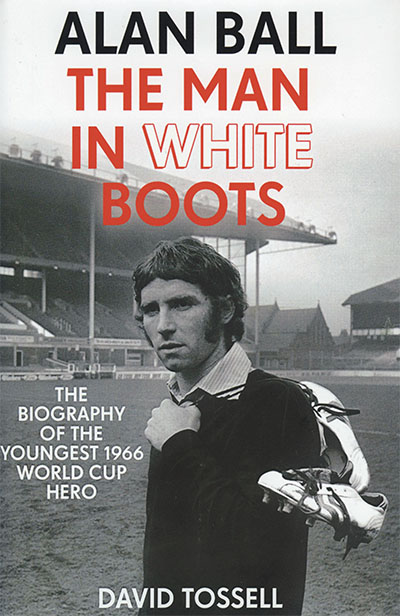Search: 'Harry Catterick'
Stories
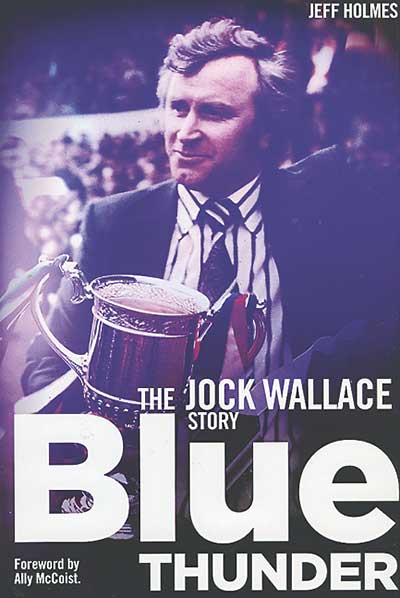
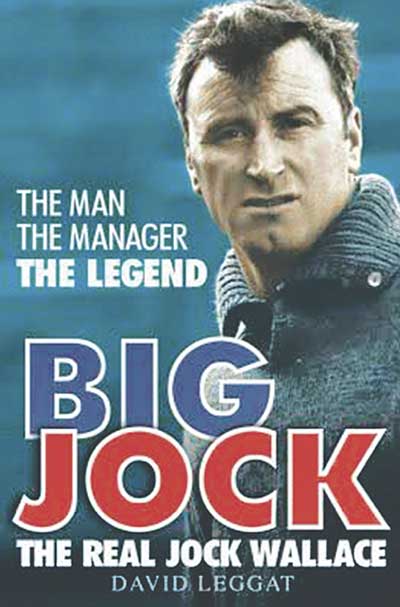 Blue Thunder
Blue Thunder
The Jock Wallace story
by Jeff Holmes
Pitch Publishing, £17.99
Big Jock
The real Jock Wallace
by David Leggat
Black & White, £9.99
Reviewed by Ian Plenderleith
From WSC 347 January 2016
Jock Wallace was the manager of Rangers from 1972 to 1978, and is revered at Ibrox for leading the club to two trebles that ended a decade of dominance by Jock Stein’s Celtic. In the 1980s he returned for a second, less successful, spell at the club. He is also famous for making his players run endlessly up and down the sands of Gullane, a costal town east of Edinburgh.
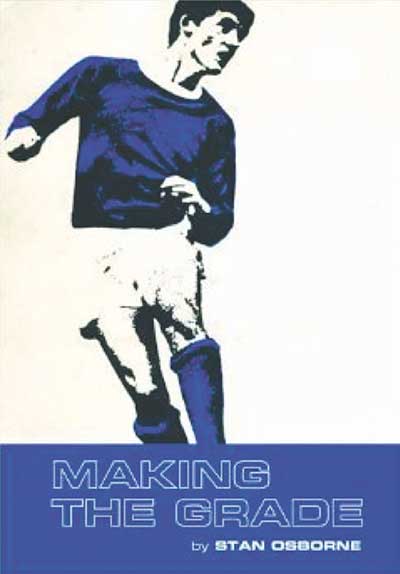 by Stan Osborne
by Stan Osborne
Legends Publishing, £12.99
Reviewed by Julian McDougall
From WSC 343 September 2015
Making the Grade was published in 2012 but without the critical reception it deserved. Stan Osborne has had two careers, footballer and teacher. Here, he shares his memories of the first, spanning just two years (1969-71) as an Everton youth player and alludes to its impact on the much longer second. This is most striking when he accounts for his own time at school: “This was the 1960s and there was no hue and cry about physical punishment… we accepted [it] without complaint, in the knowledge that it was invariably administered justly and fairly.” The author never says this directly, but there is a strong implication that he laments not only today’s player power but also the shifts in school discipline.
On the cover, Joe Royle says he read the book in one night, and certainly any reader with an interest in the vein of unsung football insight previously attributed to the likes of Eamon Dunphy, Gary Nelson and Gary Imlach (whose father Stewart, then an Everton coach, plays a prominent role here) won’t labour over this.
Osborne writes directly and with precision, dispensing with the need for reflective flourish – the order of things was as it was, and the better for it. The book reflects on the social and hierarchical function of “banter” at a football club and the pervading insecurity of that world – much of the bullying is carried out by those with the most to lose, the younger pros keeping apprentices in their place, while the first-team stars are benign and aloof.
Has Osborne observed a parallel in education, you wonder? But the central theme – of this being a harsh world for working-class men, from school to football to the outside world – ultimately turns the author into a victim as he is released and bluntly asked by Everton manager Harry Catterick to “close the door on the way out”. His playing days will continue at semi-pro level, but within weeks he is at college training for PE teaching. Never, though, does Osborne lay blame, he accepts this cruel fate as harsh but fair, as with the pain inflicted by his teachers.
This sense of undeveloped implication ultimately frustrates as the book might have been even more fascinating had Osborne described life as a PE teacher in the Black Country. Every day must, we’d assume, be inflected with the experiences of his first career. Teaching is full of exes: artists, musicians, athletes and these days, thanks to Michael Gove’s scheme, soldiers, all carrying the weight of the past. When Osborne tells us “I walked out a hard bitten angry young man with a chip on his shoulder the size of the Liver Buildings who was determined never to feel the pain of failure again”, I want to know how this impacted on his teaching, and how he feels about his students’ attitudes.
In the final pages he returns to Everton’s training ground, Finch Farm having replaced Bellefield, now a “relic from a different time and place”, and casts another stoical gaze on the inevitability of heartbreak for most of today’s academy hopefuls, still envious of their slim chance despite his own experience – “gosh, the tears hurt… even now”. Leaving the reader wanting more is, of course, the hallmark of a great book, and this reader hopes Osborne writes a sequel about his second career.
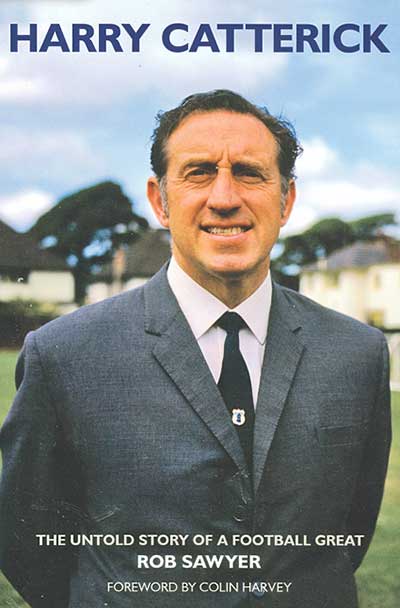 The untold story
of a football great
The untold story
of a football great
by Rob Sawyer
De Coubertin Books, £18.99
Reviewed by Simon Hart
From WSC 340 June 2015
It was 30 years ago in March that Harry Catterick died after suffering a heart attack at Everton’s FA Cup quarter-final against Ipswich Town. Five years earlier, Dixie Dean had also died at Goodison Park yet unlike the nationally famous striker, Catterick’s achievements – building two League title-winning teams – are today largely ignored beyond Merseyside.
Rob Sawyer has sought to redress the balance in a well-crafted biography that begins with a foreword from Colin Harvey, part of Catterick’s 1970 Championship side. “Don Revie, Bill Shankly, Bill Nicholson and Sir Matt Busby all get mentioned as being the great managers of the era while Harry doesn’t,” says Harvey of a man who won as many Leagues and FA Cups as Revie.
It is with Shankly, though, that Harvey makes the most telling comparison. For half of his 12-year reign, Catterick’s Everton drew the bigger crowds on Merseyside yet as Harvey recalls: “The press enjoyed being courted by Bill Shankly, but Harry was an introvert and snubbed them.” This is the crux of his image problem. Here was somebody who refused to allow the BBC cameras in to film Match of the Day until 1967 and had none of the charisma of his rival. Catterick was an aloof figure more akin to a modern-day director of football who – as his players would joke – put on a tracksuit only when the TV cameras or chairman John Moores appeared.
To achieve this insightful portrait, Sawyer pieced together interviews given by Catterick himself along with reminiscences of players and journalists and contemporary press cuttings. Alex Young recalls the coldness of a man not interested in courting popularity, saying: “I never got a pat on my head.” He had a devious side too, lying to the press and his own players; he told midfielder Brian Harris, for instance, that rumours of Tony Kay joining were false, only to swoop later that day for a player who had helped his Sheffield Wednesday side finish Division One runners-up in 1960-61.
Yet while his 1963 title-winners, built with the largesse of Littlewoods tycoon Moores, were dubbed “cheque-book champions”, the vision behind his youthful 1970 team would fit most current ideas of how to play the game. It was a 4-3-3 formation with the “holy trinity” of midfielders Howard Kendall, Harvey and Alan Ball at its heart. Dave Sexton, then Chelsea manager, applauded him for succeeding with a “set of small players up front” and Catterick’s own view was: “When it comes to the creation of something in tight corners, which midfield men have to do, give me the little ones.”
His players might have endured an old-fashioned factory-style clocking-in system but his planning of Everton’s Bellefield training ground – with an indoor pitch for small-sided matches – was another demonstration of foresight. Indeed in October 1970 Charles Buchan’s Football Monthly magazine dubbed the then 50-year-old “a manager for the Seventies”.
Sadly for Catterick – and his legacy – his Everton team soon fell apart. Sawyer recalls a pivotal week in March 1971 when they lost a European Cup quarter-final to Panathinaikos and FA Cup semi-final to Liverpool. After Ball left in controversial circumstances and Catterick himself suffered a heart attack, he was sacked in 1973. Not until 1985, two months after his death, would Everton win the League title again.
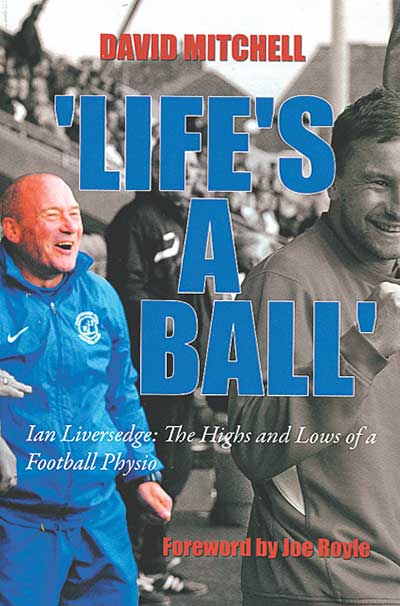 Ian Liversedge: the highs and lows of a football physio
Ian Liversedge: the highs and lows of a football physio
by David Mitchell
AuthorHouse UK, £10.95
Reviewed by Brian Simpson
From WSC 337 March 2015
Ian Liversedge had a long career as an itinerant football physio working for 20 clubs and 15 managers. The highlights are at the margins of his central story as he encounters famous people who played minor roles in his life. As a young player who didn’t make the grade as a pro he experienced the detachment of Everton’s legendary manager Harry Catterick and later encountered Brian Clough, in decline but still gracious in victory. A quote from Kevin Keegan in his playing days at Newcastle goes someway to explaining why striker Imre Varadi was on his way to accumulating 16 clubs: “OK, Varadi has scored 21 goals this season. I’ve set him up to score 60. How many times has he set me up? None. Fact.”
Less well known but vividly drawn is Accrington’s ex-chairman Eric Whalley. He had played for the club, managed them twice, taken a place on the board and eventually bought them. He funded player purchases but fell out with the local council about the cost of yoga classes for the club’s players. A major focus is the ten years Liversedge spent at Oldham from the mid-1980s, where the chalk-and-cheese chemistry of the taciturn Willie Donachie and the garrulous Joe Royle is captured well. His time at Newcastle also gives an insight into the management pairing of Keegan and Arthur Cox, yet very little of this is entirely new.
A desire to pack in as many stories as possible means that some topics don’t get followed up as fully as they might. For example, there are several incidental comments on the changes that have taken place in the treatment and medical care of players, but these are not considered in any coherent way. Some key points are better illustrated by a simple anecdote, such as when the gap between rehabilitation options at elite clubs and the rest is highlighted by noting that at smaller clubs his best option was sometimes to just take players for a walk and a coffee.
Towards the end of the book he describes meeting old friends from football when the conversation rarely touches on the game but is more about “the scrapes” they shared. But drinking exploits are the sort of tales that can only have been funny to those taking part and possibly not even then. Fans who followed Oldham in the period he describes might feel slightly short changed to find that many at the club followed a motto Liversedge characterises as “win or loose, have a booze”.
His description of players’ behaviour, and his own, is at least frank as he acknowledges its impact on his family life. But there is little reflection on whether the behaviour should have a place within any professional sport, nor an understanding of the way it feeds the negative stereotype of football held by many people. In the end, and despite the strengths of the book, his largely uncritical acceptance of some of what he saw or did leaves an impression in places of an opportunity missed.
